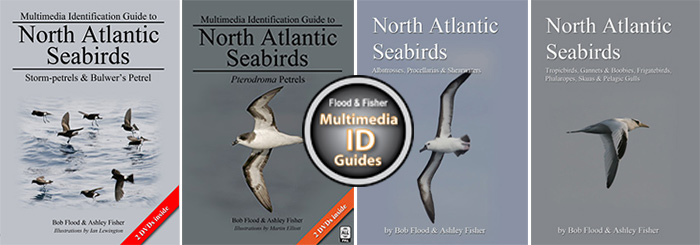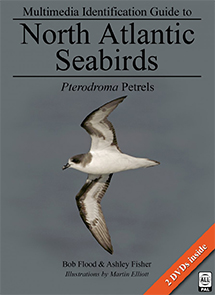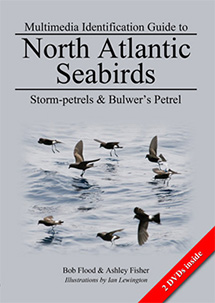Finders in the Field: Fea's Petrel from Scilly Pelagic 18 Aug 2014
by Bob Flood
8.18 pm. Highlights so far: juvenile Arctic Tern, on-board Manx Shearwater, good showing of European Storm-petrels, and a huge 150+lb Blue Shark tagged and released.
Menhaden oil was doing the business and the slick was broad and ran away from the boat into the distance like a silvery motorway. European Storm-petrels relished it and good numbers worked over the oil like busy bees, forever restless. I kept a careful eye on the slick anticipating a Wilson’s, but no luck so far. Anyway, it was good to watch the Euros performing.
I was scrutinising the Euros when, much further down the slick, and in the top of my binocular vision, I briefly saw a long-winged petrel flying head-on toward me. It lifted over the top of a wave and then disappeared into the following trough, hugging the contours of the sea surface. Fancy that, I thought, it looked rather like a Fea’s. Hang on, that’s Fea’s Bob. (Rest of brain wakes up). Bob! We’re talking Fea’s here! (Every cell in body goes into red alert.) The petrel rose over the crest of the next wave, still head-on; it had long and slightly bowed wings, a dark cap, dark eye patches, and a deep quite wide blackish bill.
My mind momentarily flashed back to Madeira and Cape Verde where I studied the feae-complex, visiting both locations numerous times. A feae-type petrel head-on flying down a slick toward me was a familiar sight. The body of the two taxa of Fea’s Petrel always looked fairly wide, while Zino’s Petrel always looked narrow. This is an ID tip included in our multimedia ID guide Pterodroma Petrels. The body of this bird was fairly wide. No way was this bird a Zino’s.
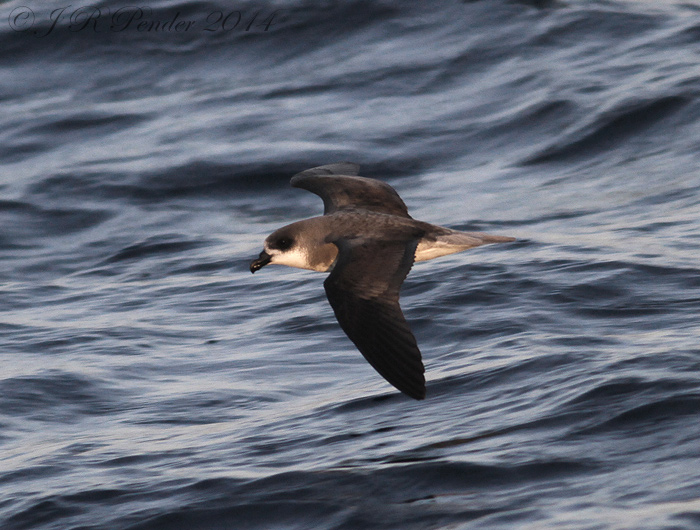
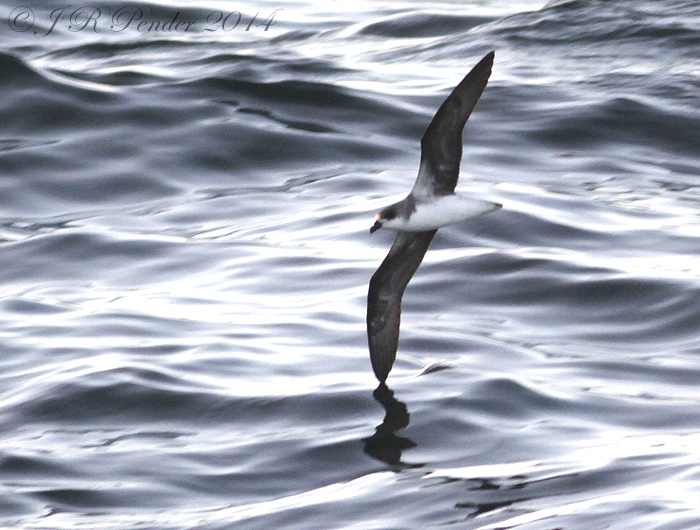
I was in danger of ‘freezing’ with the overwhelming excitement of a Fea’s Petrels in sight of my home. I managed to blurt out, ‘Fea’s in the slick!’ The yell triggered panic stations, with Joe (Pender) in and out of the cabin like lightning to grab his camera, all birders rapidly moving to their best vantage point, shouts giving directions, and a few bemused shark fishermen scurrying out of the way of the ensuing mania. If only Joe had CCTV on his boat. A rewind would be hilarious.
The Fea’s swooped around the bow and down port side, close, turning back on itself, lifting, banking back around, and so on, in a way only a pterodroma can fly. It swung around the stern and along starboard side, still very close. This performance went on for several minutes. Each time I thought it was heading off, it headed back in, often sniffing the slick laced with Menhaden oil. The plumage was fresh looking. Eventually, of course, the star performer began to drift away, though not directly, foraging in irregular circular actions, moving closer to the islands. It was on show in this fashion for quite a while. I last saw it bank left in front of St Agnes lighthouse, and then it was gone.
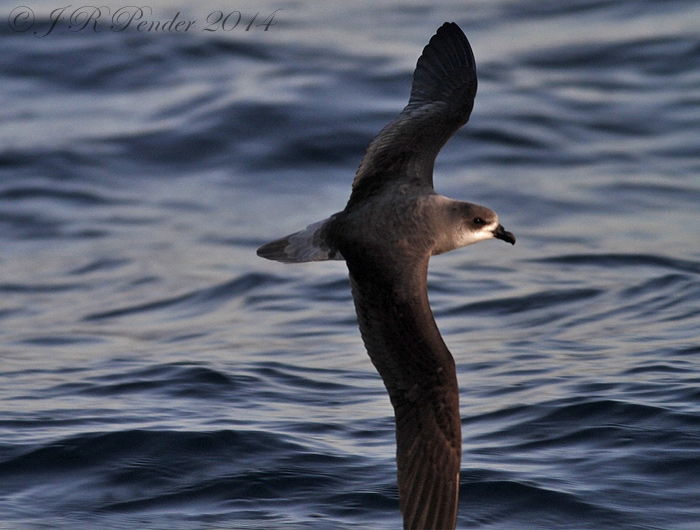
My impression of the bird as it flew around the boat was more Cape Verde Petrel than Desertas Petrel. The underwing-coverts were wholly dark, lacking whitish markings (except the whitish inner forewing patches, and a few randomly distributed whitish blotches), so typical of the majority of Cape Verde Petrels. Most Desertas I have seen have at least a whitish crescent in the hand. It was fairly heavily built with a reasonably thickset body, but not strikingly robust like some Desertas that I have seen. It reminded me very much of a Fea’s Petrel that visited our boat numerous times over several hours off Hatteras, North Carolina, USA in 2009 (see clips 175–177 on DVD1 of Pterodroma Petrels). However, after the event, I was surprised to see the robustness of the bill shown in Joe’s photos, more reminiscent of a Desertas Petrel. The nasal tubes were funnel-shaped and swollen at the base, again suggesting Desertas. There is much overlap in the morphometrics of the two subspecies, and on average males are larger and heavier than females. So, maybe this was a large male Cape Verde Petrel? Maybe it was one of the minority of Desertas Petrels that lack whitish crescents etc in the underwings?
In my opinion, of the two subspecies of Fea’s Petrel, only the truly massive and brutish male Desertas can be safely IDd in the field (e.g. bottom photo, page 154 of Pterodroma Petrels). Small Desertas and large Cape Verde Petrels overlap, and a small female Cape Verde Petrel could just overlap with a large male Zino’s Petrel (though Zino’s does have a rather different jizz – watch our DVDs).
Forgetting the analysis for now though, I’m still buzzing from this exceptional pterodroma experience.
Finally, I am a fan of the late Ian Drury, even though he wasn’t a seabirder, but if he had been then the song surely would have gone, ‘Reason’s to be cheerful, one, two, FEA’S!’
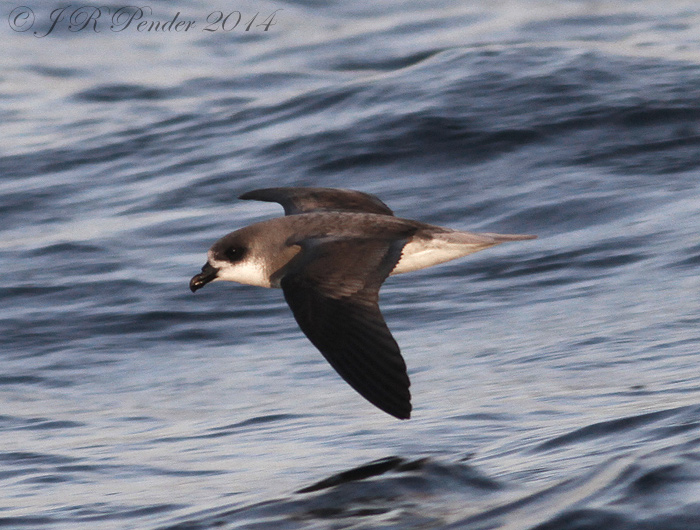
Fea's Petrel in Britain and Ireland
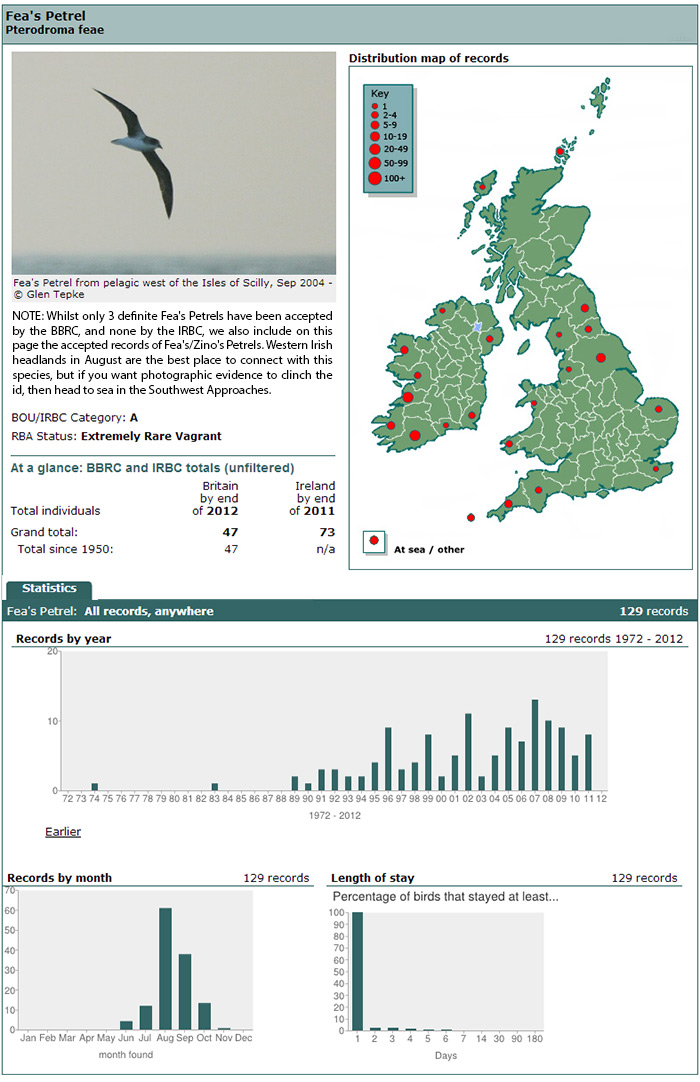
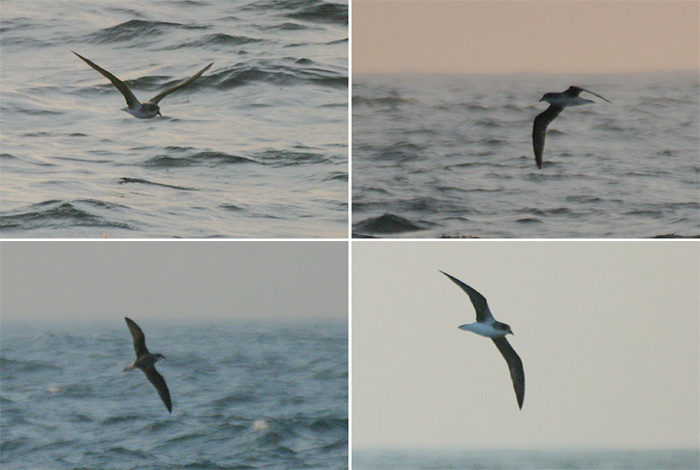
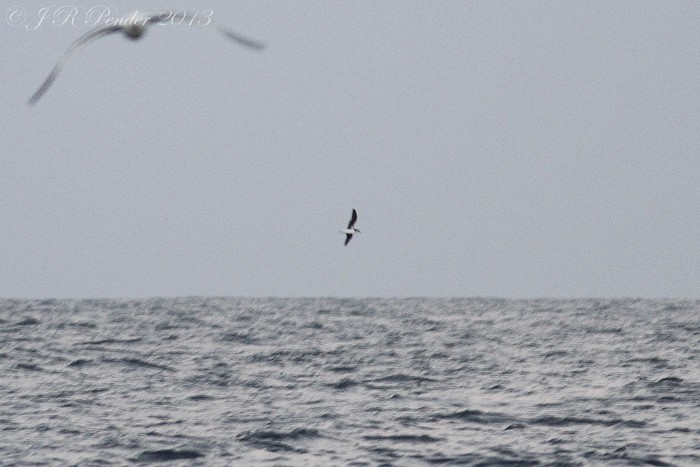
Bob Flood Scilly Pelagics
19 Aug 2014

